AC frequency converters, also known as variable frequency drives (VFDs), are essential for modern electrical and industrial systems. They enable energy savings, optimize motor performance, and provide fine control over the respective operations of machinery. Understanding how AC frequency converters work, including their different types and applications, can help provide answers to improving operating efficiency in various industries, from manufacturing to renewable energy. This guide will help simplify the complexity of AC frequency converters by providing in-depth coverage on the working principles, benefits, and applications. Engineers, technicians, and even curious observers of industrial technology will significantly benefit from the knowledge contained in this comprehensive introduction to the power of these tools.
What is a Frequency Converter?
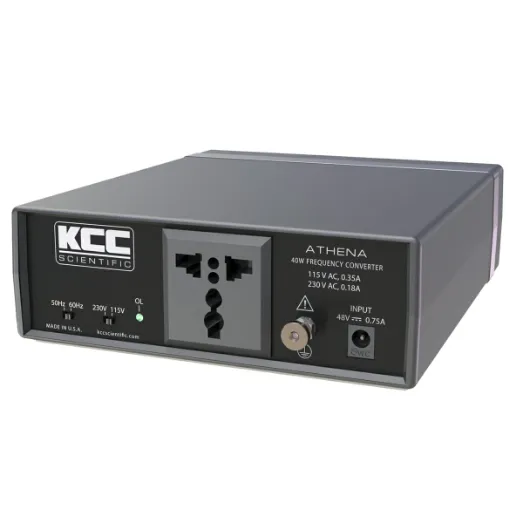
Frequency converters are essentially electronic devices that alter the frequency of AC electricity to control the speed of motors and other devices. By adjusting the input frequency, they enable precise control of the device powered by AC electricity. These converters have ample use in industries where varying motor speeds are necessary-a good example being manufacturing, heating, ventilation, and air conditioning (HVAC) systems, as well as renewable energy applications. Frequency converters facilitate energy conservation and efficiency, enhance system performance, and reduce wear on machinery by conditioning the power supply according to the operating requirements.
Definition and Purpose
In modern traceability, frequency converters ensure the optimization of processes by regulating alternating current power systems smoothly. These are quite tolerant when converting a fixed frequency in AC as input into an output frequency and voltage that are variable, and can exert a controlled force as demanded by the motor speed or torque. Frequency converters are used in applications that require constant adjustment of their variable mode to changing requirements, such as conveyor belts, pumps, and compressors. These converters use less power and generate less mechanical tensile stress, along with lower maintenance costs for the machinery, making them ideal for improving operational efficiency. They are an eco-friendly system, as they reduce overall electrical consumption and other pollution factors. Front-end frequency converters take it a step further with the inclusion of digital control systems for installation automation and remote monitoring, enhancing the system’s performance in complex industrial environments with improved reliability and flexibility.
Types of Frequency Converters
| Type of Frequency Converter | Key Features | Applications |
|---|---|---|
| Voltage Source Converter (VSC) | Uses DC link with capacitors | Industrial motors, power grids |
| Current Source Converter (CSC) | Uses inductors for energy conversion | High-power applications |
| Cycloconverter | Direct AC-to-AC conversion | Low-speed large motors, drives |
| Direct Matrix Converter | Compact with high efficiency | Aerospace, robotics |
| Indirect Matrix Converter | Intermediate DC link for improved performance | Automotive, renewable energy |
| Digital Frequency Converter | Advanced microprocessor control | Precision systems, HVAC systems |
How Frequency Converters Work?
They operate by adjusting the frequency of the AC power supplied to match the predefined specifications for the device or system with which they are coupled. There are generally three stages that take place in the process: first, the AC power received as input is rectified into steady direct current (DC) using rectifier circuits. This stage ensures that the fluctuating nature of the AC input is converted into a continuous voltage source. This is when the DC signal is treated or conditioned within the system to achieve the best possible performance. This can be achieved by utilizing filters and energy storage components that buffer voltage fluctuations, ensuring that during quality intervals, power supply downtime is extremely short, if at all. In the final stage, the conditioning of DC power is then inverted into AC power, with impedance matching required to match the frequency, using advanced inverter circuits. Most modern frequency converters employ pulse-width modulation (PWM)-based inverter technology, which enables the use of microprocessors or digital control algorithms for optimal performance in frequency adjustment, resulting in high energy efficiency. These systems are being used in the industrial sector to improve equipment efficiency, save energy, and support the operation of renewable energy sources.
AC-AC Frequency Converters
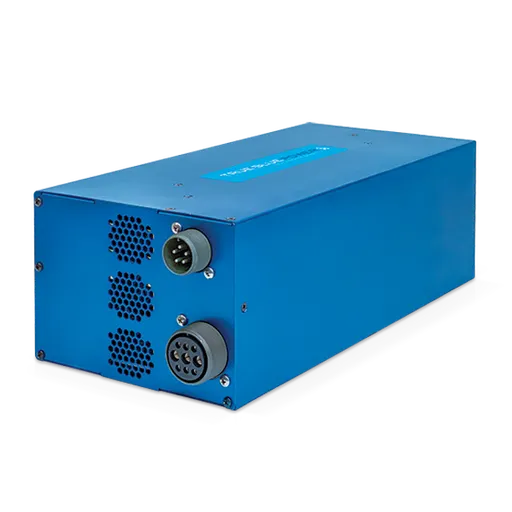
AC-AC frequency converters are devices that change the frequency of an alternating current supply without requiring an intermediate conversion to direct current. These converters fall under one of the two major types: cycloconverters and matrix converters. Cycloconverters directly transform the input frequency to a lower output frequency by controlling the firing angle of thyristors or triacs. They are therefore used in large motor drives and industrial processes where variable speed is required. Matrix converters, on the other hand, act as frequency converters by connecting an array of bidirectional switches from the input to the output, thereby providing good performance and compact design. Both technologies allow varying frequency and voltage to be controlled precisely, which is extremely important where adaptability and efficiency are primarily considered, such as in industrial automation, renewable energy applications, and variable speed drives.
Overview of AC-AC Frequency Converters
AC-AC frequency converters, which are essentially devices capable of converting one AC frequency to another without requiring an intermediate DC conversion, are at the heart of modern power electronics. Both primary types, direct and indirect frequency conversion, categorize them.
Direct frequency converters, also known as matrix converters, utilize an arrangement of semiconductor switches to provide direct routing between the input and output phases. These systems, therefore, eliminate the bulky intermediate storage components, resulting in more efficient and compact designs. It also provides bidirectional power flow, suitable for regenerative processes, and hence faces fewer restrictions, thereby increasing the overall system’s flexibility.
Indirect, by contrast, depends upon an intermediate DC stage, which is used to decouple input and output. By utilizing rectifiers and inverters, this class of converters can achieve more extensive frequency transformation and enhanced dynamic performance. It is essentially a high-power approach, where reliability and accurate control of the output waveform are vital.
Single Phase vs. Three Phase Frequency Converters
| Key Points | Single Phase Converters | Three Phase Converters |
|---|---|---|
| Input Voltage Requirement | Typically 120V or 230V | Typically 400V and above |
| Power Handling Capacity | Lower, suitable for small loads | Higher, suitable for industrial operations |
| Efficiency | Moderate | High |
| Complexity | Simple design | More complex circuitry |
| Cost | Relatively low | Higher initial investment |
| Applications | Residential and small commercial equipment | Industrial automation, heavy machinery |
| Voltage Fluctuation Tolerance | Moderate | High |
| Maintenance Requirements | Low | It can require expert maintenance |
| Output Stability | Stable for small applications | Very stable for heavy-duty equipment |
| Typical Use Cases | Fans, lights, small motors | Large motors, industrial systems |
Applications of AC-AC Frequency Converters
Industrial Automation
AC-AC frequency converters are widely used in industrial automation, where motor speeds and torques must be precisely controlled for the operation of conveyor belts, compressors, and pumps. The change in speed performed upon the motor enables it to serve the process optimally; thus, both energy consumption and productivity are optimized.
HVAC Systems
These converters are essential in Heating, Ventilation, and Air Conditioning (HVAC) systems. They provide for the speed variation of various fans, blowers, and pumps to achieve the required temperature and airflow conditions with the least energy expenditure. This facility further enhances efficiency and reduces the cost of operation.
Renewable Energy Systems
In renewable applications, and more particularly in wind energy, AC-AC frequency converters take variable-frequency electricity generated by wind turbines to a constant frequency suitable for grid integration, thereby facilitating steady power delivery and maximizing energy harvesting.
Marine and Aerospace
AC-AC frequency converters are crucial on marine vessels and aerospace systems for driving variable-speed motors used in propulsion and auxiliary systems, as well as for operational control of navigation equipment with high reliability and performance demands.
Testing and Simulation Equipment
Frequency converters find their utility in test equipments to simulate electrical conditions of specific areas (for instance, 50 Hz or 60 Hz). It is truly a matter of life or death for manufacturers when testing products for markets worldwide and adhering to regional standards.
Heavy Machinery
AC-AC frequency converters are commonly used in heavy machinery, such as milling machines, crushers, and drilling equipment. It’s the high-power load handling capability of these converters and their strong performance that make them indispensable in mining, construction, and manufacturing sectors.
Voltage Specifications
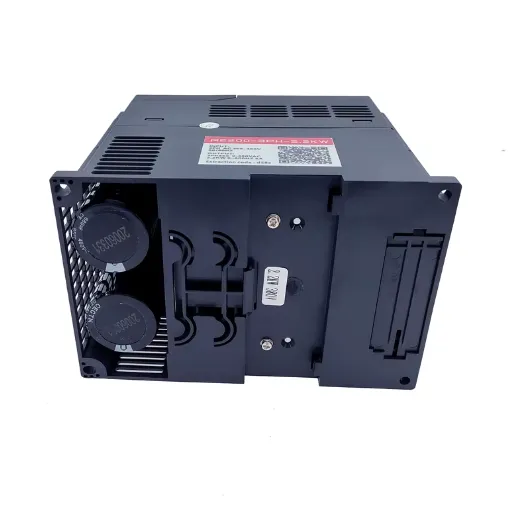
Generally, voltage specifications for AC-AC frequency converters depend on the application and power system standards of the region within which they are used. Standard voltage ranges concerned are as follows:
- Low Voltage (LV): 200V to 690V. Used on lower industrial machinery and equipment.
- Medium Voltage (MV): 1kV to 35kV, suited for larger industrial applications and heavy-duty machinery.
- High Voltage (HV): Above 35kV, utilized in specialized applications such as power grids or large infrastructure projects.
The decision on the correct voltage depends on load requirements, system compatibility, and adherence to principal considerations, including regional electrical codes that ensure performance and compliance with regulations.
Input Voltage Variations (120V, 230V, 400Hz)
Input voltage variations are crucial to the design and applications of electrical systems, particularly when aligning with global standards and specific operational environments. The 120V standard is primarily suggested for use in North America, particularly for residential, commercial, and light industrial applications, where it is compatible with a single-phase alternating current system. Whereas the 230V standards extend much farther throughout Europe and many other regions, providing better efficiency to meet increased power needs in residential and industrial applications. The 400Hz frequency, commonly used in the aerospace and military sectors, reduces the size and weight of electrical equipment, thereby providing an essential boost in performance. Thus, the considerations regarding the input voltage and frequency include the application sphere, equipment specifications, and local conformance standards to ensure their optimal performance across a wide range of operational contexts.
Understanding 115VAC and 230VAC
| Key Point/Parameter | 115VAC | 230VAC |
|---|---|---|
| Voltage Range | Typically 100-120V | Typically 220-240V |
| Frequency | 50Hz or 60Hz | 50Hz or 60Hz |
| Common Region | North America, Japan | Europe, Asia, Africa |
| Wire Configuration | Hot, Neutral, Ground | Hot, Hot, Ground |
| Device Power Compatibility | Lower power devices | Higher power devices |
| Efficiency | Less efficient for high loads | More efficient for high loads |
| Typical Application | Residential, small equipment | Industrial, high-power systems |
| Plug Type | Type A/B plugs | Type C/E/F/G plugs |
| Transformer Requirement | Needed for 230V devices | Needed for 115V devices |
| Safety Considerations | Lower shock risk | Higher shock risk |
| Installation Cost | Typically less expensive | Higher installation cost |
| Energy Loss | Greater over longer distances | Less over longer distances |
Voltage Conversion for Different Frequencies
Voltage conversion across different frequency bands has its characteristics and technical challenges due to differences in electrical systems worldwide. Anyway, generally, alternating currents of 50 Hz and 60 Hz require a special kind of converter or transformer so that the changes can be made compatible for the device on one side and the power source on the other. Such a process becomes crucial when, for instance, machinery executions must be imported or the connecting device is configured for one frequency standard to work with another.
One of the primary considerations in this matter is the frequency-dependent operation of inductive and capacitive constituents, such as motors and transformers. At higher frequencies, inductive reactance increases, and if the equipment is not developed to accommodate such frequencies, it may lead to inefficient operations or even overheating of the equipment. Similarly, at lower frequencies, equipment such as transformers is large and heavy due to the large quantity of core materials required to reach similar levels of operational capacity.
Modern conversion techniques, including solid-state frequency converters, have been developed to circumvent these problems. These devices enable two-way conversion between 50 Hz and 60 Hz, allowing electrical devices to be practically employed without extensive reconfiguration. However, voltage conversion generally requires careful planning in the industrial field or in cases where power conversion is needed at relatively high potentials to avoid energy loss and comply with international safety standards.
Frequency Conversion: 50Hz to 60Hz and Vice Versa
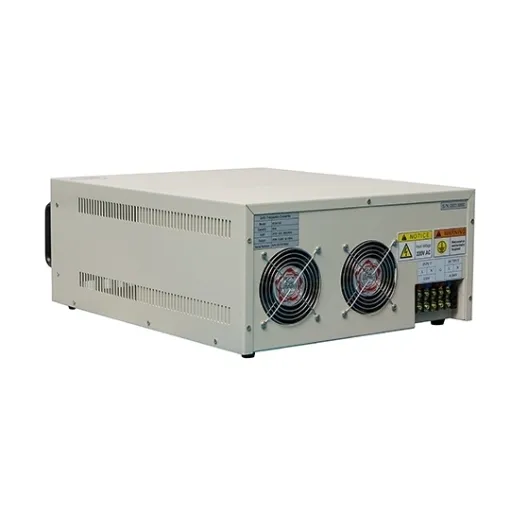
Frequency conversion between 50 and 60 Hz is achieved with frequency converters, which adjust the input electrical frequency to match the desired output frequency. Such converters generally convert the alternating current (AC) into direct current (DC), then convert the DC back into AC, but at a new frequency. This preserves the voltage and frequency of the output according to the exact specifications of the connected equipment. Today’s modifications are highly efficient, with a strong emphasis on minimizing energy loss during conversion. Generally, the most reliable way to ensure compatibility between two systems operating under different standards is through frequency conversion.
Importance of Frequency Conversion
The frequency conversion must be carried out between electrical systems and equipment working under different standards. There are various power frequencies used around the world. For example, in Europe, 50 Hz is in use, whereas in North America, it is 60 Hz. Without frequency conversion, most devices would run inefficiently or be damaged outright when placed on systems operating under a different standard. In addition, frequency converters play a crucial role in industries that require precision in motor speed control, such as manufacturing systems, aerospace, and renewable energy systems. For example, wind turbines rely on frequency conversion to convert variable-speed wind energy into grid-compatible output. The advances in modern converters have improved the efficiency, reliability, and capability to reduce harmonic distortion, thereby delivering the best possible performance in various applications. Hence, frequency conversion becomes a necessity in today’s interconnected electric universe.
Challenges in 50Hz to 60Hz Conversion
The conversion of electrical power frequencies between 50Hz and 60Hz presents several technical and logistical challenges, particularly in globally interconnected electrical systems. Equipment compatibility is mainly an issue, as most industrial and commercial equipment is designed to operate at a single frequency. For example, motors, transformers, and generators lose efficiency, overheat, and may even experience mechanical stress if they operate outside their intended frequency range.
For an accurate conversion between frequencies, one requires specialized equipment, such as rotary or static converters. Although rotary converters are more rugged and robust, they require considerable maintenance and occupy a larger physical space. On the other end sit the static converters, which utilize semiconductor technology such as IGBTs (Insulated Gate Bipolar Transistors), facing difficulties in thermal management and EMI (electromagnetic interference).
Yet another complexity is added when scaling these systems for frequency conversion at high power, such as grid interconnections. The efficacy versus reliability debate in such large-scale operations highlights the need to mitigate harmonic distortion, which can propagate throughout the system and impact the equipment of the end-user. These finally raise the networking infrastructure to the frequency conversion level, with high installation and operational costs being economic hurdles in places with limited access to advanced technologies. These concerns encompass some of the technical complexities of 50Hz to 60Hz conversion, continually requiring advancements in power electronics and system design.
Solutions for Frequency Compatibility
To address a frequency incompatibility problem, a broader, multi-front, and technically creative approach is called for, with worldwide development now based on primary power system and engineering design. One of the prominent solutions to this problem is the use of solid-state frequency converters that employ modern power electronic devices to provide seamless conversion between 50 Hz and 60 Hz, with minimal power losses and without producing severe harmonic distortions. These are generally equipped with voltage regulation functions and are made of modular building blocks that can be scaled according to application demands, ranging from industrial to critical infrastructure applications.
Another approach is the development of dual-frequency equipment that can work reliably on either 50Hz or 60Hz power supplies, thereby eliminating the need for an external converter, especially for applications that must operate in global markets where both standards coexist. Advances in motor and generator design, including Variable Frequency Drive (VFD), further underpin this approach, allowing speed to be controlled with great accuracy.
Ultimately, harmonizing international frequency standards — a long-term goal — will significantly minimize the remaining problems in designing and deploying global power systems. Governments, manufacturers, and standards organizations are the key players that need to cooperate across sectors to overcome the technical and logistical obstacles associated with such an immense undertaking. All of these solutions illustrate how engineering genius and forward-looking policies become crucial when addressing frequency compatibility needs.
Advantages of Using AC Frequency Converters
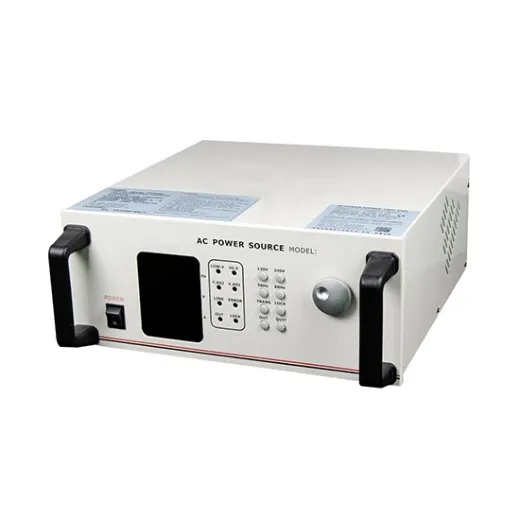
Enhanced Equipment Compatibility
Frequency converters enable devices designed for different power frequencies to operate in harmony when power systems span international boundaries.
Energy Efficiency
Frequency converters enhance industrial and commercial applications. They save energy by controlling motor speed and torque.
Extended Equipment Lifespan
The smooth start of motors and speed variations allowed by frequency converters decrease mechanical stress and, consequently, wear and tear, while increasing the life of the equipment.
Operational Flexibility
Frequency converters enable fine control of motor operations, allowing processes such as manufacturing or HVAC systems to be customized and adapted.
Cost Savings
Energy savings and reduced maintenance costs enable operators to implement cost-effective solutions in the long run.
Energy Efficiency and Cost Savings
The use of frequency converters in industrial and commercial processes has become a crucial strategy for enhancing energy efficiency and reducing operating costs. By continuously adjusting motor velocity and torque in response to immediate demand, these devices optimize energy usage and enable a potential 30-50% reduction in energy consumption under variable load conditions (e.g., conveyor systems or pumps). Conversely, recent studies in the industry claim that systems with advanced frequency converters exhibit less mechanical wear and require less maintenance attention, thereby reducing downtime and its associated costs.
Integrating the use of frequency converters also benefits from the Global Energy Sustainability goals. More modern models have regenerative braking and energy recovery functions that help recycle and reuse excess energy. In evaluating the cost-benefit analysis, a considerable number of enterprises have reported a significant return on investment, sometimes within two to three years, due to reduced energy costs and further equipment longevity. Thus, for both economic and environmental benefits, frequency converters are a crucial issue.
Improved Performance and Equipment Longevity
Advanced frequency converters represent a significant leap forward in the physics and optimization of motor-driven systems through precise motor control. Variable speed capabilities enable the systems to mitigate mechanical stresses caused by speed changes under load, operating conditions that would traditionally result in excessive wear and tear on the equipment. Researchers report a significant reduction in maintenance requirements and operational breakdowns for equipment operating with frequency converters, often resulting in more than 20% savings beyond the expected life of the equipment. Modern semiconductor technology, coupled with real-time monitoring features, has enabled systems to detect faults and identify avenues for thermal management, thereby guarding against actual or potential damage to the equipment. Not only does this increase uptime, but it also ensures industry-compliant, efficient, and sustainable operations.
Reference Sources
-
A Transformerless AC-AC Converter with Improved Power Quality
- Summary: This study introduces a transformerless AC-AC frequency converter designed to improve power quality while reducing total harmonic distortion (THD). The proposed system eliminates the need for bulky transformers and uses a high-frequency controlled rectifier for voltage stabilization and a low-frequency inverter for frequency control.
-
Modified Single Stage AC-AC Converter
- Summary: This paper explores the matrix converter, a single-stage AC-AC converter that eliminates the need for intermediate DC storage elements. The study uses the Venturini control method to achieve sinusoidal input and output waveforms with bidirectional power flow.
Frequently Asked Questions (FAQs)
Q: How can a single phase frequency converter be used for 120V 60Hz to 230V?
A: A single-phase frequency converter is used for changing the input voltages from 120V 60Hz to a higher voltage, like 230V, as one of the pieces of equipment that are manufactured for other standards of electrical supply. The converter adjusts the voltage and frequency specific to the equipment connected, ensuring it runs correctly. Hence, choosing a converter with the right output power to provide the required AC output is the consideration for your application. Another consideration is that it should have short-circuit-proof features and thermal shutdown for safety.
Q: Can I convert 60Hz to 50Hz using a frequency converter?
A: It is possible to convert 60Hz into 50Hz by frequency conversion if the application requires the equipment to operate on different power supplies. The conversion facilitates equipment designed to operate at 50Hz to operate effectively within a 60Hz environment. A solid-state frequency converter is generally recommended for this purpose due to its excellent efficiency and ability to maintain the output voltage across a wide band. Some, however, can accommodate inputs from different voltage ranges to permit worldwide functionality.
Q: What are the benefits of using a three phase frequency converter?
A: In industrial applications, a three-phase frequency converter has many advantages over a single-phase converter: They can carry higher loads, providing the needed supplies to large electrical equipment without much variation. A three-phase output voltage is the voltage that an AC motor operates, lost less in energy conversion through such a voltage. Additionally, these converters are capable of generating the required output power with pure sine wave characteristics, which are necessary for sensitive machinery. They are also offered with high reliability through short-circuit protection and overload protection.
Q: How does a frequency converter ensure short circuit protection?
A: A frequency converter’s short circuit protector is ensured by safety mechanisms inside it that check the output voltage and current incessantly. Should a short circuit occur, the converter automatically shuts down to prevent damage to the connected equipment’s output. This is especially essential for preserving the integrity of the electrical system and preventing you from incurring expensive repairs. Thermal shutdown is also integrated into many modern converters to provide further protection against damage from overheating. These pros and cons should be part of the considerations when investing in industrial-quality frequency converters.
